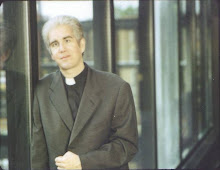This essay is based on Craig A. Satterlee, “Good Friday,” New Proclamation Year A 2011, Advent through Holy Week, ed. David B. Lott (Minneapolis: Augsburg Fortress, Minneapolis, 2010), pp. 224-231.
In “Preaching the Gospel of John: Abundant Life as a Vision for Christian Community,” the award-winning course I teach with Barbara Rossing, we are exegeting and preaching on John’s Passion as I edit this issue of “Preaching Helps” for Holy Week and Easter. Professor Rossing and I emphasize preaching John’s Gospel and not blending or conflating Passion accounts, and inadvertently proclaiming either an account of Christ’s Passion not found in Scripture or an interpretation of Christ’s Passion unfamiliar to the Church. For the Fourth Evangelist, Jesus’ Passion is the hour of Jesus’ glorification and his coronation as king. Jesus, who willingly and completely controls the situation, is “lifted up” and enthroned on the cross, where he completes his work of defeating the forces of evil and drawing all people to himself. It is the "hour” (Cf. John 2:4; 7:6, 30; 8:20; 12:23; 13:1; 17:1.) of Jesus' “glorification” (Cf. John 11:4; 12:23, 28.), the occasion of his departure to the One from whom he came. For John the cross is the moment when the One by whom the world was made lofted himself to the place of power and light, which he had in the beginning with God. If we are preaching from John, we need to preach Jesus’ Passion as God’s plan, Christ’s victory, and the hour when salvation is complete.
In Preaching John class, we find it helpful to divide John’s Passion account into its components scenes—Jesus in the garden, Jesus’ trial before the high priest and Peter’s trial in the courtyard (18:1-27); Jesus before Pilate (18:28-19:16); crucifixion (19:16-37); and burial (19:38-42). In so doing, the scenes that surround the crucifixion provide ways if preaching about it.
The garden scene shows that Jesus completely controls his fate. While we traditionally think of this episode as the betrayal and arrest, in the hands of the fourth evangelist, Jesus dominates the events of the garden and completely controls what occurs there. The Passion is underway because Jesus allows it to begin.
Jesus’ trial inside the house of Annas and Caiaphas and Peter’s trial outside in the courtyard contrasts Jesus’ faithfulness with Peter’s—and our—cowardice. The maid who keeps the door asks Peter if he is Jesus’ disciple. Whereas Jesus responded, “I AM” in the garden, Peter lies and answers, “I am not.” Peter then joins the very ones who came to the garden to seize Jesus around a charcoal fire (vv. 18-19). Jesus’ answer to Annas’ question about Jesus’ disciples and his teaching highlights the devastating effects of Peter’s denial.
Interrogated by Pilate (18:28-19:16), Jesus is revealed to be a king. In actuality, two trials again take place. Inside Pilate’s headquarters, Jesus stands trial before Pilate; outside Pilate’s headquarters, Pilate stands trial before the Judeans. A compelling image for me is that Jesus comes out to the crowd under his own power, still in control, dressed as a king. Unlike the synoptic gospels, Jesus remains dressed in purple robe and crown. He goes to the cross, his glorification, as a king.
They take Jesus to be crucified (19:16-37). Still in control, Jesus carries the cross himself to Golgotha. Jesus is “lifted up” between two others, already gathering people to himself. The author of John does not dwell on the bloody details of crucifixion (19:18) and neither ought the preacher of John’s Passion. The author of this gospel moves immediately to the inscription on the cross, another instance of Rome’s ironic proclamation of Jesus as king, written in the cultured languages of the empire. That Jesus is king is universally proclaimed and can be read by all who pass by, one more indication that Jesus is drawing all people to himself. Even though Jesus’ accusers protest, Pilate will not change the inscription. Once again, Pilate unwittingly proclaims the truth.
John’s account of Jesus’ Passion ends where it began—in a garden—as Jesus is buried by friends (19:38-42). Two secret disciples become public. Joseph of Arimathea secures the body of Jesus from Pilate and Nicodemus brings a very large amount of myrrh and aloes. Together, they anoint Jesus’ body with the spices and wrap it in linen cloths. Then they place Jesus in a new tomb. Jesus is buried as a king. In the garden that began this Passion account, Jesus was surrounded by enemies, betrayed by Judas, and misunderstood by Peter. In this garden, Jesus is surrounded by friends, who publicly witness to their relationship with him by attending to his body in a royal manner.

No comments:
Post a Comment